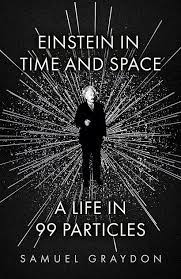The Hamas-Israel Conflict
This is a supplement to my regular weekly blog. I am publishing it separately because I know that the interest level of readers varies – from mild to intense – depending on the topic. So when I am especially interested in a particular topic, such as the Hamas-Israel conflict or COVID vaccines or global warming, etc., I will occasionally publish special issues that go into the subject at some length. By doing that, I’ll be able to devote more of my weekly issues to business, investing, entrepreneurship, and other topics that are traditionally in my bailiwick.
Why I’m Studying Boxes Full of Research Papers and Rereading Exodus…
The United States has always been a country of competing political parties and correspondingly different views about everything from taxation and trade to foreign policy to domestic policing to education and welfare and just about every other important issue.
But in my life – which includes the Cold War with Russia, the Civil Rights Movement, the Equal Rights Movement, the Vietnam War, the War on Poverty, the War on Drugs, the Gay Rights Movement, 9/11, and the wars on Iraq and Afghanistan – beneath the disagreements, which were sometimes very hateful, there were always a few ideas and principles, or at least rules of engagement, that both sides could agree on. That is, after all, how we managed to move through and beyond those disagreements. At least, that’s how it has always seemed to me.
It changed when Donald Trump was elected in 2016. The shock among most moderates, liberals, and leftists – and even many conservatives – ignited a pandemic of fear that was much less about the merits of Trump’s ideas or promises than it was about his character. And as Trump assumed the presidency, his evident enjoyment in belittling and name-calling those who opposed him only stoked the fires of fear into a chronic distrust and then into disgust and finally into an unmitigated and unapologetic loathing for the man and everything he said and did.
The Democrats in Congress, armed with a phony document ordered and paid for by the Hillary Clinton Election Committee, began a three-year campaign to impeach Trump for “Russian collusion.” At the same time, the liberal and left-wing media began its own campaign of supporting the Russian Collusion hoax, hiding the Hunter Biden scandal, and criticizing every Trump initiative, even those they had long argued for.
These unfounded and since-disproven political narratives, spread and amplified by mainstream media bias, were enormously successful in solidifying and raising the animosity of anti-Trump voters. But they also, unexpectedly, set off an equally strong surge of loyalty to Trump by his base, as well as by hundreds of thousands of new supporters, including old-school liberals and undecided voters.
Since then, we have become a country broken in two, heatedly arguing about everything from COVID-19 to the CRT and White Privilege and gender fluidity theories being taught in our schools.
It got to the point where friends and families couldn’t talk to one another anymore, for fear of triggering a fight. And I’d bet that most everyone was wishing we could just lower the emotional temperature and get back to normal standards of disagreement.
Then, on October 7, 2023, Hamas terrorists invaded Israel and brutally murdered more than 1,200 Israelis, almost all civilians. Their “acts of resistance” included raping and knife-killing women, burning children to death, shooting and hacking teenagers to death, and beheading infants.
And the reason we know those things happened – despite claims by some Hamas supporters – is because a number of Hamas soldiers decided to videotape the slaughter. (One, for example, recorded a murder on his victim’s phone and then sent the clip to her family. Another called his parents in Gaza, bragging that he’d “just killed 10 Jews” with his “bare hands.”)
It was an act of the kind of barbarity that is relatively rare in human history. So I woke up the next day expecting to see the world united in horror and outrage. Instead, even while the bodies were lying there, butchered, thousands of Muslims all over the world were dancing in the streets. A day or two after that, I was astonished to see thousands of Americans in major cities and hundreds of students at prestigious universities marching in support of the horror Hamas had inflicted, some shouting “Kill the Jews!”
But what was, perhaps, most disturbing to me was the fact that I never heard a single word of criticism and/ or condemnation against Hamas or what its soldiers did that day from any of my highly educated, highly intelligent, highly successful, and proudly liberal and leftist friends. If I didn’t initiate a conversation about the atrocity, it did not come up. It was as if it didn’t happen.
I never considered myself to be a student of Middle Eastern history. Nor was I particularly knowledgeable about the conflagrations that have occurred between the Palestinian Arabs and Jews during my lifetime.
But I certainly did know, and I assumed everyone knew, that the Jews had been under siege for most of their history. Can you think of another ethnic, racial, or religious group that has been more oppressed, ostracized, exiled, unjustly incarcerated, attacked, and murdered en masse?
So there I was, stuck in the middle of a new and fast-growing global culture enraged and engaged over Institutional Racism, Colonialization, White Supremacy, Homophobia, Transphobia, and other ideological versions of oppressor-victim theology. And yet this primitive, tribal slaughter had just occurred… and there was no outpouring of rage from anyone.
On the contrary, as the days went by and Israel began its war against Hamas, I could see that the sentiment of Americans and citizens of other countries of the “civilized” world was rapidly moving against Israel.
Israel – the only inclusive, equitable, diverse, and democratic country in the Mideast – was being described as a “colonialist, repressive, and apartheid state” that was engaging in “genocide” against the poor, noble, and defenseless Arabs living in Gaza.
At the end of October, I attended the monthly meeting of The Mules (my book club), where we, as usual, discussed our book of the month with considerable enthusiasm. Our membership includes men whose political views range from moderately liberal to modestly conservative. And I was sure that the Hamas-Israel war would be brought up at some point. But not a word was mentioned.
After the meeting, three of us stayed to talk about what none of the other Mules seemed to want to talk about. We were flummoxed by the seeming lack of interest in this major piece of news. And we were confused and fearful of what that might mean.
We talked about it for more than an hour. And in the end, we decided that what we should do was educate ourselves about Israel and the Arab people that lived in Palestine. We needed to make sense of the world’s reaction to what had happened, and we hoped that if we knew the history of the conflict, we would arrive at some sort of understanding.
So we formed an informal little group. And the other night, we met for the first time to share what we had learned from the research we had done so far.
Based on that, the following essay is my current thinking.
The Hamas-Israel War: Let’s Get the Facts Straight

On November 29, 1947, in an effort to resolve the continuing conflict between the Jews and the Arabs living in Palestine, the UN General Assembly adopted Resolution 181, calling for the partition of Palestine into two states – one for the Arabs and one for the Jews.
Prior to that, there had been many – more than a half-dozen – formal and informal proposals for the Arabs and the Jews to have their own sovereign states. Every single time, the Jews were willing to talk about it. And, on at least three occasions, they accepted the plan offered. But the Arabs never once even considered a “two-state solution.”
The UN’s 1947 Partition Plan gave the Arabs the lion’s share of Palestine (including all of its fertile land). The Jews were given a much smaller section that consisted mostly of swampland and desert.
Did the Jews object? Did they insist on negotiating a better deal? No. Depleted and exhausted by the Holocaust and WWII, they accepted the offer.
The Arabs, however, rejected it immediately and out of hand. They didn’t even suggest a counteroffer.
So the Jews took possession of the modest parcel of swamp and desert they had been offered, leaving two sections of Palestine – the city of Gaza and the West Bank – to the Arabs. And on May 14, 1948, they founded the State of Israel. They then went on to turn it into one of the richest and most productive economies in the Mideast.
And they did it without oil!
They also developed a democracy. A genuine democracy. Where the Arabs that lived within Israel’s borders had full and equal rights.
This did not, however, bring peace to the region.
Palestine‘s Arab population was always comprised of distinct tribes. They had been fighting with one another for hundreds of years, as well as occasionally attacking Palestine’s small Jewish communities.
With the formation of Israel in 1948, the Palestinian Arabs focused their attention – and most of the billions of dollars in aid they were getting not only from rich Arab states but also from Western democracies (including the US, England, and France) – on purchasing weapons, including missiles and missile launchers, to bomb the new state.
In response, the Israelis developed perhaps the most sophisticated defense system in history.
Over the next five decades, efforts continued to be made to resolve the conflict – each one summarily rejected by whatever group was representing the Arabs in Palestine.
Then, in 2005, with an increasing percentage of Israelis hoping that a more generous concession might finally bring peace, Israel unilaterally agreed to remove all of the Jews that were still living in Gaza – by force, if necessary – and bring them to Israel.
It was an astonishing offer at the time. And there were many that believed it would work. But it was, like every prior offer, immediately and totally rejected by the Arabs. To add insult to injury, in 2006, the Palestinian Arabs elected (by a huge margin) Hamas, a known anti-Israel terrorist group, to govern Gaza.
Israel took actions to protect itself by putting a wall between itself and Gaza and blockading the ports.
I’ve been trying to understand why the Arabs have rejected every offer of a two-state solution and have continued to attack Israel by land and sea, even though they are fully aware that Israel’s military and defense systems are infinitely superior to their own.
I have found only one answer that makes sense: Hamas, Hezbollah, the PLO, and the Palestine Authority don’t want a compromise. Their position, from the beginning, was that they should occupy all of Palestine, “from the river to the sea.”
This is not an abstract conclusion that I came to by reading between the lines. It is the written policy of Hamas and Hezbollah (in their charters), and it has been the stated policies of the leaders of the PLO and the Palestine Authority for most of the last 70 years.
The actual text of the Hamas charter, which I’ve read in translation, states, in no uncertain terms, that its goal is to conquer the State of Israel – and then not only kill all its Jewish citizens, but kill every Jew on the face of the Earth. And after this Jewish genocide is completed, their next goal will be to convert or kill every infidel (non-Muslim) in the entire world, including Christians, Hindus, et al.
I swear. I’m not making this up!
Note: I’m not saying that all Muslims share this mission. What I am saying is that it is the mission of the terrorist Muslim/ Arab groups that occupy Palestine now – a mission that they have confirmed time and time again in their published charters and in their public statements.
It’s still early in my research. I’ve got plenty more work to do on this. Nevertheless, those are the facts.
So why is it that, even after the horrifying October 7 slaughter of Israeli civilians by Hamas, so many intelligent people in civilized countries around the world consider Israel to be the villain in this story?
How is it possible that they’ve bought into so many ideas that are not just wrong, but completely wrong?
Here are some of the charges the Pro-Hamas side has been making:
“Israel is an apartheid state.”
Prior to October 7, I’d never heard anyone accuse Israel of being an “apartheid” state. Apartheid, to me, was South Africa prior to 1988 – where Black Africans were systematically and brutally kept in second-class citizenship. So, what do the anti-Israel protesters mean?
When I asked people who are sympathetic to “the cause,” here is a sampling of what I was told:
* In Israel, Arabs live in poor, walled-off neighborhoods.
* They are paid poverty wages to do menial and degrading work.
* They can’t vote. They don’t have free speech.
* They are victims of racism at every level of government, including the courts.
Essentially, they say, the Israeli Arabs have been relegated to second-class citizenship by depriving them of many or most of the human rights that the Jews in Israel enjoy.
When I looked into it, though, this is what I found:
* Arabs are free to live wherever they want in Israel.
* They earn the same pay as Jews earn for the same jobs.
* They can vote. They have free speech.
* They have every right that Israeli Jews have, and are represented at every level of business and government. They are CEOs, members of Parliament, and Supreme Court justices.
So, no. Israel is not an apartheid state.
“Israel is a colonialist occupier of Palestine.”
Israel became a state in 1948 when it took up the UN on its “Partition Plan.” The Arabs didn’t. The Arab population that lived within Israel’s new borders was allowed to stay there, but it was a relatively small group.
In subsequent years, hundreds of thousands of Jews settled in Palestine.
During the same period, Arabs were moving to Palestine from Jordan and other neighboring Arab nations. Their primary motivation was financial – just as it was for the millions of Latin Americans that have crossed into the US via our southern border.
As I said, the land that was given to the Jews as part of the UN’s 1947 Partition Plan consisted mostly of patches of desert and swamp. Which, in the ensuing decades, they miraculously turned into highly productive farms and cities and industries. The Israelis were growing their economy by double-digits for many years and creating thousands of jobs. There weren’t enough Jews to fill those jobs, so they opened them up to Arabs living nearby in Gaza.
Israel now has hundreds of thousands of Arabs living and prospering within its borders. It also allows more than a hundred thousand Arabs to commute to Israel daily for work.
So, no. Israel is not occupying Arab lands. That is nonsense.
But there is another argument – one that has more merit, at least superficially – about Israel occupying Arab land that it seized after each of two wars it fought against its neighbors: the 1967 Six-Day War and the 1973 Yom-Kippur War.
Seizing land is what countries often do after winning wars. And it is usually accepted as fair and reasonable. Israel did win vast stretches of land because of those two wars, including most of what is now called Jordan. But this is a complicated subject, one that I’m just getting into. So I’m going to come back to this “occupier” issue another time.
As for being “colonialist…”
Colonialism is essentially when one country takes over the land of another country by force. But the Jews that emigrated to Palestine after 1948 and bought land in Gaza paid for every acre they settled on. They did not take it by force. If a bunch of Methodists from Minnesota moved into Brooklyn and bought up half of Brooklyn Heights, you couldn’t call them colonialists.
Well, you could, but you would be wrong. And anti-Methodist!
One of the problems with the colonialist argument is that different people point to different historical eras to establish their case.
“Israel is conducting “genocide” on the Palestinians.”
One can only make this statement if (1) one doesn’t know what genocide means, or (2) one knows nothing about the history of this conflict.
In fact, the idea that Israel is engaged in genocide is so absurd that I won’t bother to say anything more than this: Since Israel was established in 1948, the Arab population in Palestine has grown six-fold.
The Civilian Deaths
This is the trickiest issue to discuss.
Retaliating to the October 7 invasion and attack, Israel declared war on Hamas. And the IDF (Israel Defense Force) carried out a mission to destroy Hamas by, for starters, bombing the hell out of Gaza. Which has resulted in, if you trust Hamas’s numbers, something like 10,000 civilian deaths.
Israel has taken measures to reduce this sort of “collateral damage,” as it is called, with, among other things, phone and leaflet campaigns sent into Gaza, letting civilians know, ahead of time, that their neighborhoods are targets and they should take refuge elsewhere.
It would obviously be to Israel’s advantage, from a public perception point of view, for all of those civilians to evacuate the target zones. But that has been difficult. Not only for practical reasons (e.g., being able to pack up and travel and survive what came next), but also because, according to the IDF, Hamas was threatening to execute any civilians that did leave.
All civilian deaths in war are tragic. The number of Israeli civilians that were killed on October 7 – 1,200+ – seemed enormous when I first heard it. But now it feels, to some people, “small” compared to the thousands of Palestinian civilians that have been killed by the bombings.
One thousand. Ten thousand. As the death toll mounts, it seems inevitable that the anti-Israel sentiments expressed by the thousands of protesters will become hardened, while the political posturing by the Biden administration and other Israel allies will weaken.
One thing that needs to be understood in considering this tragedy: The Hamas-Israeli conflict is a war. A war that was started by Hamas. Wars are terrible. They always and inevitably result in massive economic destruction and the killing of countless civilians. But we do not judge the morality of a war by the number of citizens killed.
Did you know, for example, how many German and other Axis country civilians were killed by Allied bombings in WWII? More than 800,000.
And what about civilian Iraqis killed by US forces during the war against Iraq? It was somewhere between 280,000 and 320,000.
This War Can End Tomorrow
Given the way the Hamas-Israeli conflict has been being reported on by the mainstream media, we should be forgiven for thinking that what happened on October 7 was a terrorist attack, like the blowing up of a café, and should, therefore, be treated by the Israelis as a one-off, domestic crime. A police matter.
But that is not how Israel sees it. And neither does Hamas.
The invasion and massacre of 1,200+ Jewish civilians on October 7 was a declaration of war. And Israel’s response was an acknowledgement of that.
Hamas started this war and Hamas can end it – and all the terrible killing that is taking place – in 24 hours… by surrendering to Israel.
But they won’t. They have said so repeatedly. So, the war goes on.
Additional Resources
Recommended Books
For insights into American attitudes toward Israel, you might want to read Leon Uris’s 1958 novel, Exodus (or watch the movie). Click here and here for some recent reviews.
I haven’t yet read any of the following. They were either recommended to me by friends or selected from dozens I found on Google whose capsule summaries sounded intriguing. Many are supportive of Israel, but not all of them.
* My Promised Land: The Triumph and Tragedy of Israel, by Ari Shavit – recommended by SL, a friend and fellow student of this subject. Ari Shavit is an Israeli journalist who was part of the peace movement in Israel and writes a lot about it.
* Rethinking the Holocaust, by Yehuda Bauer – a balanced perspective on the 1947 vote in the United Nations that approved the partition of British Mandate Palestine and the creation of separate Jewish and Arab states.
* Start Up Nation: The Story of Israel’s Economic Miracle, by Dan Señor and Saul Singer – explores the themes of persistence, order, chaos, immigration, and opportunity, giving a well-rounded view of the way Israel pulled itself upward into the high-tech stratosphere.
* Chances for Peace: Missed Opportunities in the Arab-Israeli Conflict, by Elie Podeh – lengthy, academic yet readable research on Israel’s potential to reach peace with its neighbors over the past century. Podeh explores episodes ranging from Arab-Zionist negotiations at the end of WWI and the Six-Day War up to the 2007 Annapolis Conference and the Abu Mazen-Olmert talks in 2008, giving a wide, comprehensive analysis of Israel’s relations with the region.
* Year Zero of the Arab-Israeli Conflict: 1929, by Hillel Cohen – investigates the 1929 violent riots during which Arabs killed 133 Jews in mandatory Palestine. Almost a century later, Cohen sifted through never-accessed documents and uniquely uncovered a trove of insights, interviewing elderly Israelis and Palestinians, descendants of those who were alive at that time.
* Israel: A History, by Anita Shapiro – examines the emergence of political Zionism in the late 19th century, immigration to Israel, and the wars, political events, and cultural shifts that brought the country to where it is today.
* No Room for Small Dreams: Courage, Imagination and the Making of Israel, by Shimon Peres – a detailed account of the decisions and events that shaped the country. An insider’s view of the way Israel became what it is, discussing topics such the country’s nuclear power, the famous Operation Entebbe, and the establishment of Start-Up Nation.
* The Israeli-Palestinian Conflict: What Everyone Needs to Know, by Dov Waxman – explains key events, examines core issues, and presents competing claims and narratives of both sides. Waxman also offers a range of Israeli and Palestinian perspectives, showing readers that there is no one Israeli or Palestinian view of the conflict, and that this very diversity of views is one of the reasons this conflict has proven so intractable.
* Enemies and Neighbors: Arabs and Jews in Palestine: 1917 to 2017, by Ian Black – a lengthy review of the complex, hundred-year-long conflict between Israel and the Palestinians, based on archival research, oral testimonies, and Black’s own experience as a reporter and editor.
Recommended Videos
To get an idea of what people all over the world are thinking/ saying about the Hamas-Israel conflict, check out the following videos.
* This first one is a good introductory video about the current conflict that touches on the issues I made in the above essay. I like the way the speaker, an Israeli, makes a case for Israel with facts and logic. He’s also got a relaxed approach to the subject that I like. And I like how, at the end of all his videos on the subject (he’s done at least a dozen), he says, “If you disagree with anything I’ve said, please prove me wrong by sending facts.” Click here.
* Two more videos from him. Click here and here.
* A brief history of the conflict from Ben Shapiro.
* And here’s something specifically on why the Jews are indigenous to Palestine.
* What does the average Israeli think about all this? Click here.
* This is from four years ago. An interview with Robert Spencer, who explains why every Middle East peace plan has failed, why a two-state solution won’t work, and what must be done instead.
* A good example of the ignorance of college kids.
* A surprisingly rational conversation between a Zionist and a Palestinian about the history of Palestine.
* Conservative intellectual Douglas Murray is a strong supporter of Israel. Here is a video that captures some of what he’s been saying about the war.
* Douglas Murray vs. Norman Finkelstein, a Jew that is anti-Israel and bizarrely antisemitic, although his parents were victims of the Holocaust. Click here.
* Why do some Muslims hate Jews? An Arab scholar explains.
* Israel rejects charges of genocide at the UN. Click here.
* The UN is a joke. Apartheid? One man speaks the truth. Click here.
* Hillel Neuer testifies before the US Congress on UN Antisemitism. Click here.


 MarkFord
MarkFord





